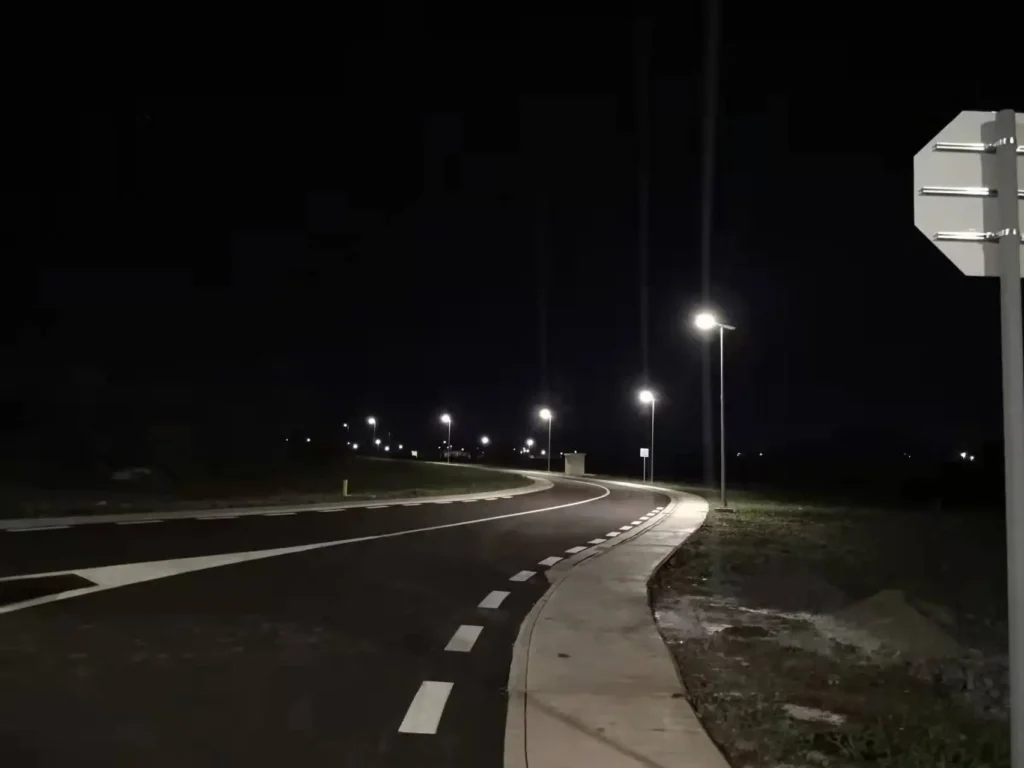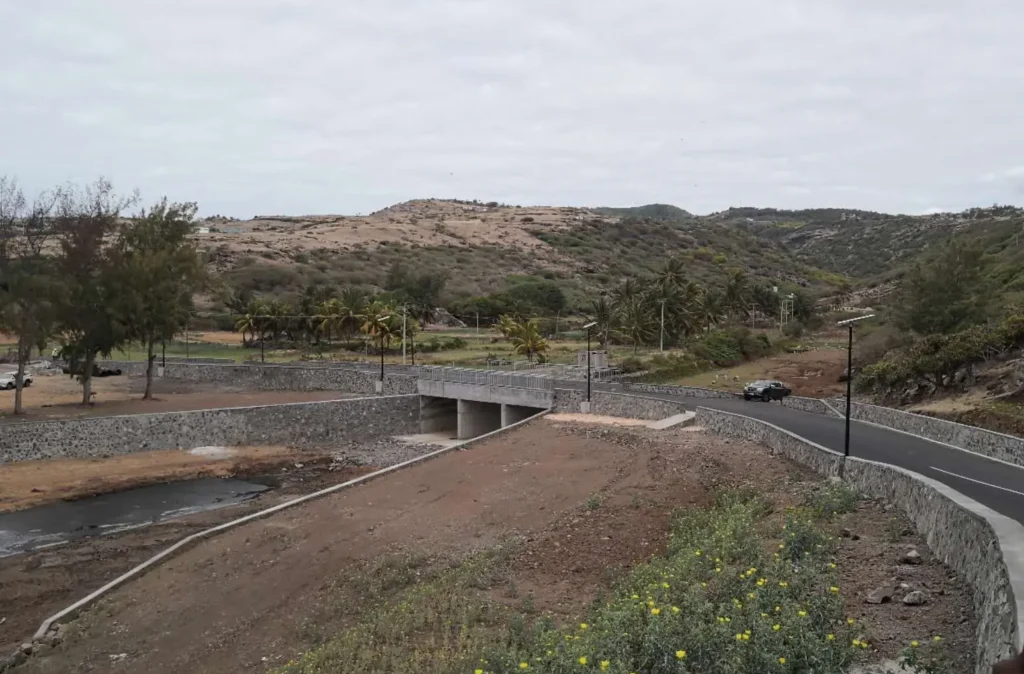Abstract
This paper presents a landmark infrastructure project in Mauritius—the construction of a public lighting system for a new landscaped boulevard. Through the large-scale deployment of 394 units of the Sresky Atlas Series integrated solar streetlights, the project successfully delivered an efficient, reliable, and completely off-grid lighting solution for a key transportation artery in an emerging development area.
I. Project Background and Requirements Analysis
1.1 Project Overview and Environmental Characteristics
Mauritius, an island nation in the Indian Ocean renowned for its natural beauty, is accelerating urbanization and regional development. This project centers on a newly built landscaped boulevard designed to open up new areas for future economic growth.
The project features several unique characteristics:
-
Off-grid environment: Due to the remoteness of the new area, the traditional power grid is either unavailable or prohibitively expensive to extend, creating a major challenge for energy supply.
-
Large scale: A total of 394 solar streetlights were deployed, marking a full-scale road lighting system rather than a small pilot project.
1.2 Core Requirements Analysis
To match the strategic positioning of the landscaped boulevard, the local government established the following key requirements:
-
Basic safety and security: Provide reliable, all-weather lighting with no dark spots to ensure nighttime driving safety.
-
Energy independence: Implement a fully off-grid solution to avoid high cable-laying costs and lengthy construction periods, enabling faster road commissioning.
-
Long-term reliability and low maintenance: The deployment of 394 units demands exceptional stability and minimal maintenance to reduce municipal operating costs.
-
Aesthetics and asset value: As a “landscape boulevard,” the lighting system must be both functional and visually appealing, creating a pleasant nighttime atmosphere while enhancing the area’s image.
II. Technical Solution Design – Sresky Atlas Series
To address the challenges of this large-scale off-grid lighting project, the Sresky Atlas Series emerged as the optimal choice, offering technical, economic, and operational advantages.
2.1 Core Technologies to Meet Key Challenges
Absolute reliability – ALS2.4 + TCS technology
-
ALS2.4 Intelligent Light Failure Compensation System: Mauritius’s rainy climate challenges lighting continuity. ALS2.4 ensures the streetlights operate normally for 10+ consecutive cloudy or rainy days, maintaining uninterrupted illumination.
-
TCS Intelligent Temperature Control System: Designed for hot climates, TCS protects batteries from heat damage, extends service life, and ensures the long-term stable operation of all 394 units.
Outstanding lighting performance – Professional highway optical design
-
High-brightness models: The project utilized SSL-38 models to meet the high lighting standards of the landscaped boulevard.
-
High-efficiency light distribution: Equipped with 230 lm/W high-efficacy LED chips and a Type II highway light distribution pattern, the light is evenly projected onto the road surface, improving both driving safety and visual comfort.
2.2 Advantages for Large-Scale Deployment
-
Simplified deployment and logistics: The Atlas integrated design—combining solar panel, battery, controller, and luminaire—streamlines transportation and installation, shortening construction timelines.
-
Reduced total life-cycle costs:
-
Zero electricity costs: Significant annual savings for all 394 streetlights.
-
Low maintenance: A three-year warranty and modular design allow for on-pole component replacement, reducing long-term maintenance expenses.
-
III. Project Implementation
The project’s success was built on efficient management and standardized processes—from prefabricating foundations to batch-assembling luminaires, then positioning, lifting, and fixing them along the boulevard. With 394 units to install, the highly integrated design and standardized installation process of the Sresky Atlas Series were key to on-time, high-quality delivery.
IV. Project Outcomes and Impacts
4.1 Social Value
-
Regional development catalyst: The illuminated boulevard serves as a vibrant artery, safely linking the remote area to the outside world and laying the groundwork for land development, commercial investment, and residential growth.
-
Improved public safety and quality of life: The project eliminates the hazards of unlit roads, creating a peaceful and comfortable nighttime environment.
4.2 Economic Value
-
Avoided infrastructure costs: The solar solution eliminates the need for costly high-voltage cable installation over tens of kilometers—potentially saving millions of dollars.
-
Long-term savings: The zero-energy-cost model provides continuous financial benefits, freeing public funds for other services.
4.3 Environmental and Sustainability Value
-
Green energy demonstration: The 394 streetlights form a mid-sized distributed photovoltaic system with substantial environmental impact.
-
Zero carbon emissions: Powered entirely by solar energy, the system aligns with Mauritius’s environmental protection image and global sustainability goals.
V. Risks and Countermeasures
-
Risk 1 – Quality control in large-scale deployment:
Countermeasure: Partner with a brand like Sresky that has mature production lines and strict QC processes to ensure uniform performance across all units. -
Risk 2 – Long-term operational reliability:
Countermeasure: The Atlas series incorporates ALS2.4 and TCS technologies, designed to withstand complex climates while ensuring stability over the long term. -
Risk 3 – Asset maintenance and management:
Countermeasure: IP65 and IK08 protection levels safeguard against environmental hazards, while modular design simplifies on-site maintenance and reduces management costs.
VI. Conclusion
The 394-unit solar streetlight project for the new landscaped boulevard in Mauritius is more than just a lighting success—it’s a forward-thinking infrastructure investment. It proves that large-scale deployment of advanced, reliable, integrated off-grid lighting solutions such as the Sresky Atlas Series can deliver essential infrastructure in areas without grid coverage more economically, more quickly, and more sustainably, lighting the way for regional development’s future.
Table of Contents

